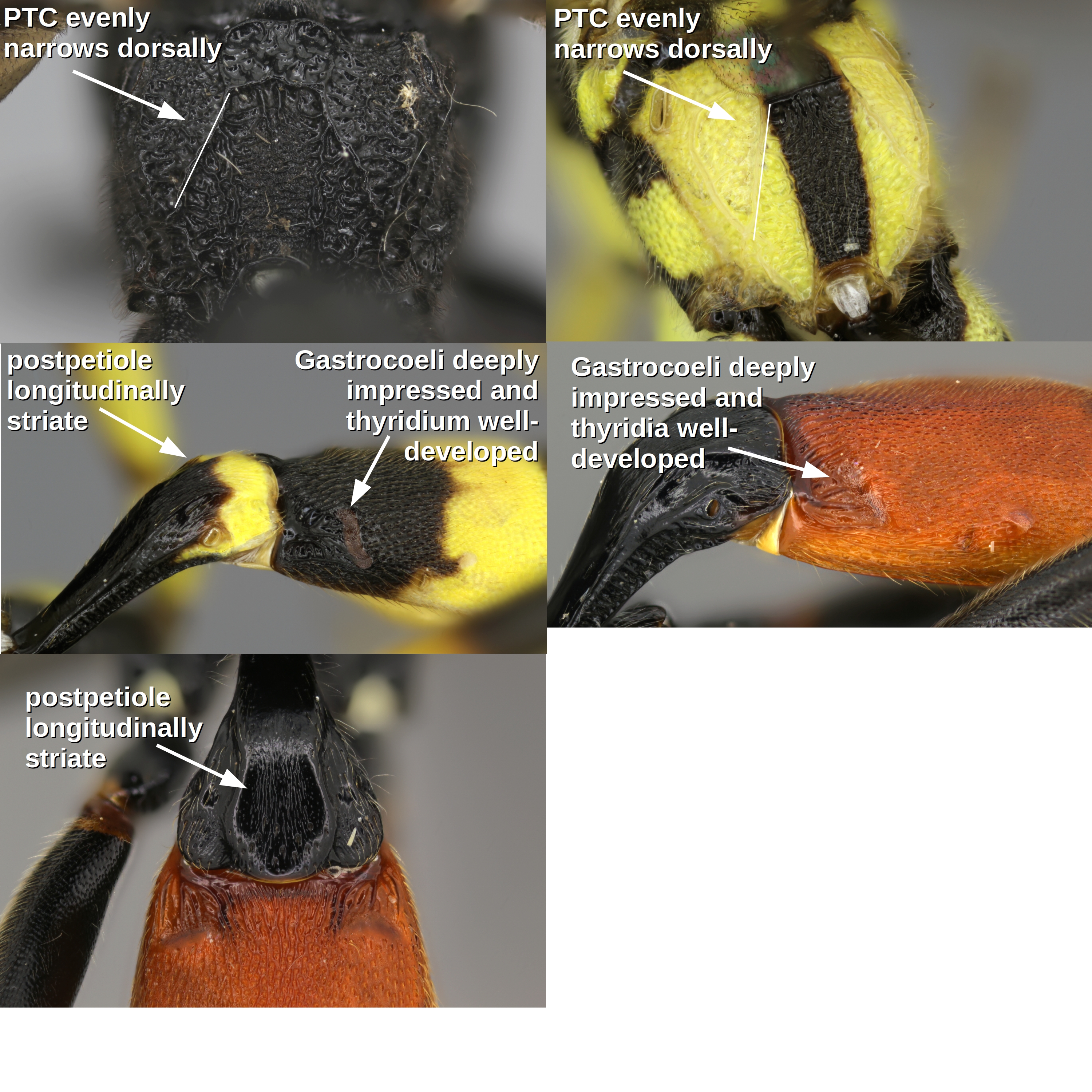Ichneumon Linnaeus, 1758
Ichneumon is among the most diverse and common ichneumonine genera in North America. There are 160 described species and an unknown but not insignificant number of undescribed species. The species are reasonably well known in the East, while in western North America the species are primarily either known only from the original and outdated descriptions or are undescribed.
Most species are medium-sized but some are as small as one centimeter (about the same size as most Barichneumon or even some Phaeogenini).
There is a wide variation in color patterns but many species share quite similar color patterns. A number of species can be confidently identified based on their distinctive coloration (e.g. I. centrator, I. devinctor, I. fuscifrons, ect.) but the majority cannot, especially the large number of brownish-red females. Often, species can only be differentiated based on more subtle characters like the development of the scopa on the hind coxa of females, shape of the head, or surface sculpture.
Various Ichneumon species attack larvae or pupae. Females hibernate as adults.
Diagnosis
- postpetiole longitudinally striate
- thyridia well-developed
- anterior margin of propodeum without medial process
- gastrocoeli moderately impressed
- female metasomal apex oxypygous
- male hypopygium without medial process
- gonoforceps not enlarged
- posterior transverse carina (PTC) of propodeum evenly narrows dorsally
- tyloids beginning on flagellomere 5 or higher
